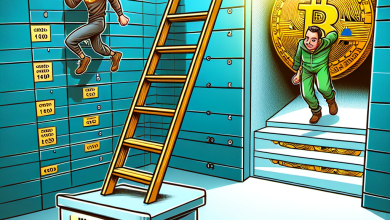Real estate funds: Consequences of the real estate crisis for investors
A good 130 billion euros. According to the BVI fund association, this is how much money German investors had invested in open-ended real estate funds at the turn of the year. That is at least a tenth of the total fund investments and almost five percent more than a year earlier – the old-school asset class is still widespread even in times of smartphone brokers and ETFs.
With open-ended real estate funds, investors usually participate in a portfolio of commercial real estate: offices, retail, shopping centers. This is usually considered boring and safe. But since interest rates have been rising rapidly and the real estate sector has been slipping deeper and deeper into the crisis, open-ended real estate funds are also showing the first symptoms of stress: the stock market price.
Anyone who wants to buy an open real estate fund such as Deka Immobilien Europa – the largest of its kind at almost 18 billion euros – can get it directly from the fund company or via the stock exchange. The same applies to sales: the fund company takes back the shares at currently EUR 47.34 each. On the stock exchange, however, a sale can currently only achieve EUR 43.29, a discount of almost nine percent. It was so much last time in the acute phase of the Corona sell-off. There are various reasons why such high discounts are being demanded on the stock market again – and this signals stress.
Providers of open-ended real estate funds such as Deka, Commerz Real (Commerzbank) or Union Investment must offer investors to take back their shares. However, there are two restrictions: On the one hand, investors must hold their shares for at least two years from the date of purchase. And there is a one-year notice period. So if you cancel today, you won’t get the current redemption price. But the one that is valid in one year when the notice period has expired. It is uncertain which courses will then apply.
“Markets anticipate what will happen in property valuations”
Sonja Knorr has been working with open-ended real estate funds for the analysis company Scope since 2005. She says: “Open-ended real estate funds are evaluated according to the evaluation method, which is based on the so-called sustainable value.” This is a key figure that has been smoothed over time. “So you didn’t go with the last peak upwards.” It’s the same downwards. The big question at the moment is whether and how large the need for devaluation of real estate actually is. The transaction market has largely come to a standstill – so there is a lack of real market values to determine the current market value of real estate.
This creates uncertainty and is part of the explanation for the fact that the discount on the stock exchange to the redemption price is currently particularly large. “The markets are anticipating what will happen in real estate valuations,” says Knorr. In the case of the EUR 15 billion Uni Immobilien Europa fund company Union Investment, the discount is currently around nine percent, as with the Deka fund, and even ten percent in the case of the EUR 17.5 billion house investment fund of Commerz Real.
This means that anyone who sells via the stock exchange now accepts a tenth discount on the redemption price, which one could most likely achieve in the event of a redemption in a year. Because the redemption price has risen steadily over the past 25 years.
In addition to the uncertainty as to whether the increase in the value of real estate, which has been so constant up to now, will continue, this is also due to the rise in interest rates. Because: Anyone who now sells via the stock exchange can invest the sales proceeds with interest. One-year fixed-term deposits with German deposit insurance are currently yielding 2.25 percent again after years of low interest rates. The discount on the market price on the redemption price must also reflect this.
From Ebitda to US-GAAP: Codes that investors should know
United States Generally Accepted Accounting Principles, the accounting standard of the United States.
International Financial Reporting Standards. International accounting standard (applied in 144 countries). Mandatory in Germany since 2005 for the consolidated financial statements of all companies that have publicly listed bonds or shares.
commercial code. Still the accounting standard for the individual financial statements of all companies in Germany. The individual financial statements include fewer subsidiaries than the consolidated financial statements, but are the basis for assessing distributions such as dividends.
Goodwill is an asset item on the balance sheet that reflects the premium on the acquired assets of acquired companies
Earnings before taxes, interest, regular depreciation and special depreciation on acquired companies (goodwill). Fair-weather indicator that is not subject to any accounting standard. Calculated differently from company to company. It is also often cleaned up. Some meaningfulness in relation to debt (the lower the ratio between Ebitda and debt, the better off the company is).
Earnings before taxes, interest, regular depreciation. Also a good weather figure (see Ebitda).
Earnings before taxes and interest. Can serve as the operating result (operating result) if there are no extraordinary interest expenses or income. Here, too, companies are happy to clean up.
Earnings before taxes and after taxes result in the net profit (net income) as a key figure for the shareholder. Net income is calculated as EPS: Earnings per share by dividing the number of shares in a company by net income. The current share price divided by the EPS in turn gives the P/E (price-earnings ratio). So-called pro-forma, adjusted earnings or pro-forma, adjusted EPS are irrelevant for shareholders because they are often difficult to understand and/or motivated by profit policy.
The currently high discounts therefore reflect the higher interest rates on the one hand and the fear that the real estate portfolios of the funds will have to be devalued despite smoothing on the other. However, analyst Knorr does not currently see any deep-seated problems like in some previous crises, such as too many investors withdrawing money at the same time and thus causing difficulties for the funds. “We don’t see any significantly increased return volumes,” she says.
Good news
And even if it came to that, the funds would still have a buffer: “On average, they are currently only 15 percent externally financed,” explains Knorr. Up to 30 percent are allowed and a further ten in acute crises. So there would still be a buffer even if many investors withdrew money.
For those already invested, that’s good news. In addition to the many problems that the real estate asset class currently has (interest rates, renovations, regulation), there is at least one more problem. In the real estate industry, that’s something these days.
Also read: Ban on heating, compulsory insulation, loss of value: This is how homeowners keep track of things






